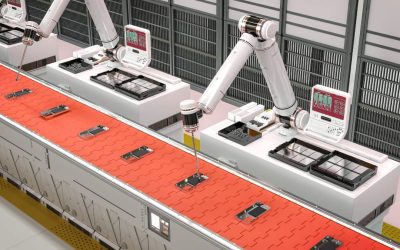Manufacturing can often be considered a steadfast industry. In fact, not just considered, we know after years of working in manufacturing ourselves that it is.
However, processes, production lines, and operating standards are now in line, ready, and waiting for change; change provides manufacturers with much-needed space to grow, reduce inefficiencies effectively, eradicate human error, better support health and safety, and continue to produce high-quality products at pace.
What’s driving this change?
Multi-disciplinary teams.
Studies show that by bringing together diverse skill sets and experience, businesses will see an improvement in products and company growth, and as we know, engineering and manufacturing require a range of skills in order to meet the needs of the business/product in production.
So how can you find the most optimal solution for your manufacturing processes and is implementing a multi-disciplinary team really the route for manufacturers?
Benefits of a multi-disciplinary team in manufacturing
You have access to a wide range of skills
From design to prototyping, development, operations, and maintenance, a multi-disciplinary team in this arena can and should cover all aspects of the manufacturing process, offering you access to varying levels of expertise in various areas outside your own providing you with opportunities and greater innovative developments.
More informed decision-making
With individuals from all backgrounds in engineering and diverse leadership, you can achieve better decision-making as critical factors aren’t forgotten, and the status quo can effectively be challenged.
This is important because manufacturing processes often fall into the trap of “always being done like that,” with missed efficiencies, cost-savings lost, and workers still carrying out mundane and repetitive tasks.
Deliver cutting-edge, creative, and innovative solutions
With a multi-disciplinary team, you gain a wide range of perspectives as everyone will approach the manufacturing process with different views and opinions. – which is a huge benefit to business because we believe in the statement, “If we all think the same, we’ll never come up with anything new,” – and this is something we all know is detrimental to business.
Automation plays a big part in delivering creativity and efficiencies, with teams freed up to look at the bigger picture and to analyse where automation can fit within manufacturing to make production lines and processes safer, more cost-effective, and less time-consuming.
Improve the customer experience
Multi-disciplinary teams also provide a holistic approach to problem-solving, allowing you to find solutions and measure technical feasibility to meet stakeholder demands.
Designing and manufacturing products that help to enhance customer satisfaction, meet user needs, address market shifts in demand, and positively affect business profitability are catalysts for continuous improvement in manufacturing.
Improved agility and adaptability
Multi-disciplinary groups use the skills within the team to allow them to respond quickly to market challenges and opportunities, allowing businesses to shift to meet market demands effectively and with minimal negative implications. Allowing manufacturers to tackle complex problems and design and develop comprehensive solutions that consider all factors.
The area of agility and adaptability is an area that manufacturers continue to focus a lot of their time and effort on, especially in light of the COVID-19 pandemic.
Retain staff and upskill
Recruitment for manufacturing roles is challenging, making upskilling teams you already have in place the best solution.
By introducing a multi-disciplinary team approach, a programme of upskilling is much more achievable and successful.
In addition, automation allows employees to upskill as routine tasks and procedures are moved from their every day, allowing them to focus on other areas that generate efficiencies. This is by no means a “robots are taking our jobs,” but providing teams with an opportunity to develop new skills to tackle more complex products and manufacturing developments.
However, we must stress that this only works when clear lines of communication are in place, with clear definitions and outlines of tasks and responsibilities from all those involved in the multi-disciplinary team.
Faster and more efficient production lines
By incorporating design and development and utilising individual members’ expertise, production lines are proven to see dramatic improvements, especially as any issues can be found and addressed sooner, and more effective and efficient processes can be implemented rather than following the same old operating standards.
In addition, due to a better flow of information and resources between teams and departments, bottlenecks are minimised, lead times are reduced, and overall productivity is enhanced.
Automation integration becomes seamless
Investing in solutions that support assessment, planning, and collaboration, where all aspects of manufacturing are coordinated and working toward a common goal, automation allows you to enhance product delivery, increase customer satisfaction, and boost profit margins.
Automation is fast becoming the driving force behind changing old-fashioned business models to improve productivity, profitability, and compliance.
Multi-disciplinary teams in manufacturing
The strengths of individual members coming together to deliver on a shared objective collectively make a production line complete, and this is the significant benefit of taking a multi-disciplinary team approach to manufacturing.
Developing a team of individuals from across all business areas to come together to achieve the same outcome.
From design and build to machine integration, Innomech is the leading automation specialist in the manufacturing sector.
Contact us today to see how we can support your multi-disciplinary team and enhance your operating processes.




